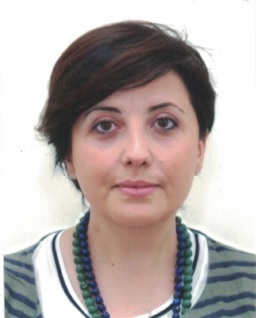Studying at the University of Verona
Here you can find information on the organisational aspects of the Programme, lecture timetables, learning activities and useful contact details for your time at the University, from enrolment to graduation.
Academic calendar
The academic calendar shows the deadlines and scheduled events that are relevant to students, teaching and technical-administrative staff of the University. Public holidays and University closures are also indicated. The academic year normally begins on 1 October each year and ends on 30 September of the following year.
Course calendar
The Academic Calendar sets out the degree programme lecture and exam timetables, as well as the relevant university closure dates..
| Period | From | To |
|---|---|---|
| 1° e 2° semestre (corsi annuali) PROFESSIONE SANITARIE | Oct 2, 2023 | Sep 30, 2024 |
| 1 SEMESTRE PROFESSIONI SANITARIE | Oct 2, 2023 | Dec 22, 2023 |
| 2 SEMESTRE PROFESSIONI SANITARIE | Jan 2, 2024 | Sep 30, 2024 |
| Session | From | To |
|---|---|---|
| ASS TN SESSIONE INVERNALE | Jan 8, 2024 | Feb 23, 2024 |
| ASS TN SESSIONE ESTIVA | Jul 1, 2024 | Jul 31, 2024 |
| ASS TN SESSIONE AUTUNNALE | Sep 2, 2024 | Sep 30, 2024 |
| Session | From | To |
|---|---|---|
| ASS TN I SESSIONE | Oct 21, 2024 | Nov 22, 2024 |
| Period | From | To |
|---|---|---|
| Festa di Ognissanti | Nov 1, 2023 | Nov 1, 2023 |
| Festa dell'Immacolata | Dec 8, 2023 | Dec 8, 2023 |
| Vacanze natalizie | Dec 22, 2023 | Jan 1, 2024 |
| Vacanze di Pasqua | Mar 29, 2024 | Apr 1, 2024 |
| Festa della Liberazione | Apr 25, 2024 | Apr 25, 2024 |
| Festa del Lavoro | May 1, 2024 | May 1, 2024 |
| Festa del Patrono di Trento | Jun 26, 2024 | Jun 26, 2024 |
| Description | Period | From | To |
|---|---|---|---|
| ASS TN TIR Tirocinio 1° 2° 3° anno | ASS TN TIR | Feb 5, 2024 | Sep 30, 2024 |
Exam calendar
Exam dates and rounds are managed by the relevant Medicine Teaching and Student Services Unit.
To view all the exam sessions available, please use the Exam dashboard on ESSE3.
If you forgot your login details or have problems logging in, please contact the relevant IT HelpDesk, or check the login details recovery web page.
Should you have any doubts or questions, please check the Enrollment FAQs
Academic staff
Study Plan
The Study Plan includes all modules, teaching and learning activities that each student will need to undertake during their time at the University.
Please select your Study Plan based on your enrollment year.
1° Year
| Modules | Credits | TAF | SSD |
|---|
2° Year It will be activated in the A.Y. 2024/2025
| Modules | Credits | TAF | SSD |
|---|
3° Year It will be activated in the A.Y. 2025/2026
| Modules | Credits | TAF | SSD |
|---|
| Modules | Credits | TAF | SSD |
|---|
| Modules | Credits | TAF | SSD |
|---|
| Modules | Credits | TAF | SSD |
|---|
Legend | Type of training activity (TTA)
TAF (Type of Educational Activity) All courses and activities are classified into different types of educational activities, indicated by a letter.
Health protection and infectious diseases (2024/2025)
Teaching code
4S010762
Credits
8
Language
Italian
Courses Single
AuthorizedThe teaching is organized as follows:
SORVEGLIANZA EPIDEMIOLOGICA E MISURE DI CONTENIMENTO DELLE MALATTIE INFETTIVE
Credits
2
Period
1 SEMESTRE PROFESSIONI SANITARIE
Academic staff
Not yet assigned
GESTIONE DELL'ASSISTENTE SANITARIO DI CAMPAGNE E PROCESSI VACCINALI
Credits
2
Period
1 SEMESTRE PROFESSIONI SANITARIE
Academic staff
Not yet assigned
MALATTIE INFETTIVE
Credits
2
Period
1 SEMESTRE PROFESSIONI SANITARIE
Academic staff
Not yet assigned
METODI E TECNICHE DI PRIMO SOCCORSO E GESTIONE EMERGENZE
Credits
1
Period
1 SEMESTRE PROFESSIONI SANITARIE
Academic staff
Not yet assigned
TUTELA DELLA SALUTE DEL SINGOLO E DELLA COLLETTIVITA': LE VACCINAZIONI
Credits
1
Period
1 SEMESTRE PROFESSIONI SANITARIE
Academic staff
Not yet assigned
Learning objectives
The course aims to provide students with the knowledge and methodologies which are necessary to recognise the epidemiological characteristics and modes of transmission and prevention of the main infectious diseases, implement primary and secondary prevention interventions, and actively collaborate in a vaccination program.
- Know and understand infectious diseases and patterns of infection, the chain of infection, route of transmission, and general infectious disease prophylaxis.
- Recognise the characteristics of infectious diseases: exanthematous diseases, sexually transmitted diseases, influenza virus disease, SARS, arthropod-borne infections, TB.
- Describe direct methods of surveillance (notification, investigation, tracking, diagnostic ascertainment, and contumacious measures) and indirect methods of infectious disease control.
- Recognise and use systems for population detection, tracking, and follow-up during epidemic and pandemic periods; and implement infectious disease surveillance and prophylaxis and containment interventions and screening activities.
- Analyse the goals of vaccination in public health, clinical trial phases of a vaccine, requirements, types and constituents of vaccines, duration of protection, routes and sites of administration and pre-vaccination history and precautions to vaccination.
- Describe the relevant laws and regulation regarding vaccination and infectious risk control and the main issues related to these topics.
- Recognise the organizational elements and main steps of a population-based vaccination process.
- Analyse methods and techniques to disseminate correct messages, supported by scientific evidence.
- Collaborate in the pre-vaccination anamnesis, identify signs and symptoms of local and generalized adverse reactions, and activate drug-vigilance and surveillance actions.
- Recognise signs and symptoms of local or systemic reaction from vaccination or prophylaxis.
- Describe emergency medications for anaphylactic shock and/or implement life-saving (BLSD) manoeuvres in emergency situations.
Examination methods: To pass the exam, students will need to:
- Demonstrate the ability to identify modes of transmission, clinical characteristics, and preventive measures of major infectious diseases.
- Be able to discuss vaccination strategy as the main tool of primary prevention, both individual and collective in a precise and organic way on the basis of the available scientific evidence.
- Be able to elaborate, starting from a simulated situation, an interprofessional vaccination program addressed to a specific target.
- Be able to describe and analyse the elements of an individual’s vaccination history and recognize risk situations.
- In a simulated situation, to be able to: A) manage needle phobia reaction; B) prevent and manage orthostatic hypotension; C) manage anaphylactic reaction, apply the ABCDE assessment, recognize the necessary drugs and mode of administration in emergency / emergency; D) apply BLSD in the correct and optimal way.
Career prospects
Module/Programme news
News for students
There you will find information, resources and services useful during your time at the University (Student’s exam record, your study plan on ESSE3, Distance Learning courses, university email account, office forms, administrative procedures, etc.). You can log into MyUnivr with your GIA login details: only in this way will you be able to receive notification of all the notices from your teachers and your secretariat via email and soon also via the Univr app.
Student login and resources
Orario lezioni
Documents
| Title | Info File |
|---|---|
|
|
pdf, it, 1031 KB, 27/09/23 |
|
|
pdf, it, 431 KB, 11/10/23 |
|
|
pdf, it, 39 KB, 27/03/24 |
|
|
pdf, it, 42 KB, 24/04/24 |
|
|
pdf, it, 1453 KB, 07/02/24 |
Prova Finale
Per essere ammessi alla prova finale occorre avere conseguito tutti i crediti nelle attività formative previste dal piano degli studi, compresi quelli relativi all’attività di tirocinio. Alla preparazione della tesi sono assegnati 7 CFU. La prova è organizzata, con decreto del Ministro dell'Istruzione, dell'Università e della Ricerca di concerto con il Ministro del Lavoro, della Salute e delle Politiche Sociali, in due sessioni definite a livello nazionale.
La prova finale, con valore di esame di Stato abilitante, si compone di:
- una prova pratica nel corso della quale lo studente deve dimostrare di aver acquisito le conoscenze e abilità teorico-pratiche e tecnico-operative proprie dello specifico profilo professionale;
- la redazione di un elaborato di tesi e sua discussione.
Si è ammessi alla discussione dell’elaborato di Tesi solo se si è superata positivamente la prova pratica. Lo studente avrà la supervisione di un docente del Corso di Laurea, detto Relatore, ed eventuali correlatori anche esterni al Corso di Laurea. Scopo della tesi è quello di impegnare lo studente in un lavoro di formalizzazione, progettazione e ricerca, che contribuisca sostanzialmente al completamento della sua formazione professionale e scientifica. Il contenuto della tesi deve essere inerente a tematiche o discipline strettamente correlate al profilo professionale. La valutazione della tesi sarà basata sui seguenti criteri: livello di approfondimento del lavoro svolto, contributo critico personale, accuratezza della metodologia adottata per lo sviluppo della tematica.
Il punteggio finale di Laurea, espresso in cento/decimi con eventuale lode, è formato dalla media ponderata rapportata a 110 dei voti conseguiti negli esami di profitto, dalla somma delle valutazioni ottenute nella prova pratica (fino ad un massimo di 5 punti) e nella discussione della Tesi (fino ad un massimo di 6 punti). La commissione di Laurea potrà attribuire ulteriori punti anche in base a:
- presenza di eventuali lodi ottenute negli esami sostenuti;
- partecipazione ai programmi Erasmus fino a 2 punti aggiuntivi;
- laurea entro i termini della durata normale del corso 1 punto aggiuntivi.
È prevista la possibilità per lo studente di redigere l'elaborato in lingua inglese.
La scadenza per la presentazione della domanda di laurea e relativa documentazione, verrà indicata negli avvisi dello specifico Corso di laurea
Tirocinio professionalizzante
Finalità del Tirocinio Il tirocinio nella formazione dell’assistente sanitario è una modalità insostituibile di apprendimento del ruolo professionale, attraverso la sperimentazione pratica e l’integrazione dei saperi teorici con l’esperienza concreta. Permette allo studente di sviluppare gradualmente un’identità professionale, di mettere in pratica i principi teorici e le conoscenze disciplinari in diverse situazioni, di recuperare dalla pratica i principi adottati, di acquisire capacità di prendere decisioni in un contesto reale.
I 60 crediti minimi riservati al tirocinio sono da intendersi come impegno complessivo necessario allo studente per raggiungere le competenze professionali “core” previste dal rispettivo profilo professionale.
Il tirocinio contempla varie attività formative:
· esperienza diretta nei servizi,
· attività tutoriali di preparazione e rielaborazione dell’esperienza (briefing e debriefing),
· esercitazioni e simulazioni in laboratorio che solitamente precedono l’esperienza diretta nei servizi al fine di garantire sicurezza verso gli utenti e gli studenti,
· studio guidato, autoapprendimento, elaborazione di piani, progetti e relazioni.
Nel corso del triennio lo studente sperimenta diverse esperienze di tirocinio accompagnate e supervisionate da tutor e professionisti esperti, finalizzate ad acquisire abilità definite dal profilo professionale dell’assistente sanitario e specifiche dell’assistenza sanitaria. L’esperienza di tirocinio si realizza attraverso la graduale sperimentazione diretta di attività educative e preventive, la comunicazione diretta con l’utente, il confronto con gli esperti, i professionisti, il tutor e gli altri studenti; si articola anche in momenti di decifrazione e rielaborazione delle situazioni incontrate e di quanto pianificato e realizzato.
La valutazione delle competenze acquisite in tirocinio. Le esperienze di tirocinio devono essere progettate, valutate e documentate nel percorso dello studente. Durante ogni esperienza di tirocinio lo studente riceve valutazioni formative sui suoi progressi sia attraverso colloqui e schede di valutazione. Al termine di ciascun anno di corso viene effettuata una valutazione sommativa (certificativa) per accertare i livelli raggiunti dallo studente nello sviluppo delle competenze professionali attese. La valutazione viene effettuata da una Commissione presieduta dal Coordinatore della Didattica Professionale (CDP), e composta da almeno un docente e da un Tutor professionale. Tale valutazione è la sintesi delle valutazioni formative, via via, documentate durante l’anno di corso, il profitto raggiunto negli elaborati scritti e le performance delle abilità tecniche e relazionali dimostrate all’esame di tirocinio che può essere realizzato con esami simulati, colloqui, prove scritte applicative. L’esame annuale di tirocinio prevede un unico appello per anno accademico, salvo particolari situazioni per le quali la commissione didattica potrà concedere un appello straordinario. La valutazione sommativa del tirocinio sarà espressa e registrata nella carriera in trentesimi in base al livello di raggiungimento degli obiettivi. Le modalità di registrazione del voto di profitto sono:
1. “assente” pre-iscritto che non ha frequentato alcuna esperienza di tirocinio;
2. “ritirato” sospensione durante il tirocinio per problemi di salute, gravidanza o per motivazioni personali;
3. “insufficiente” non raggiungimento del livello atteso negli obiettivi formativi (anche se lo studente ha sospeso la frequenza al tirocinio o non ha sostenuto l’esame finale).
Prerequisiti di accesso al tirocinio. Il Coordinatore della Didattica Professionale (CDP), ammette alla frequenza dell’esperienza di tirocinio previsto per l’anno di corso, gli studenti che hanno frequentato regolarmente:
· le attività teoriche, in particolare gli insegnamenti delle discipline professionali dell’anno in corso e dell’anno precedente
· laboratori professionali ritenuti propedeutici al tirocinio
Documents
| Title | Info File |
|---|---|
|
|
pdf, it, 92 KB, 13/09/23 |

 elisa.ambrosi_01@univr.it
elisa.ambrosi_01@univr.it
 +039 0458027288
+039 0458027288









